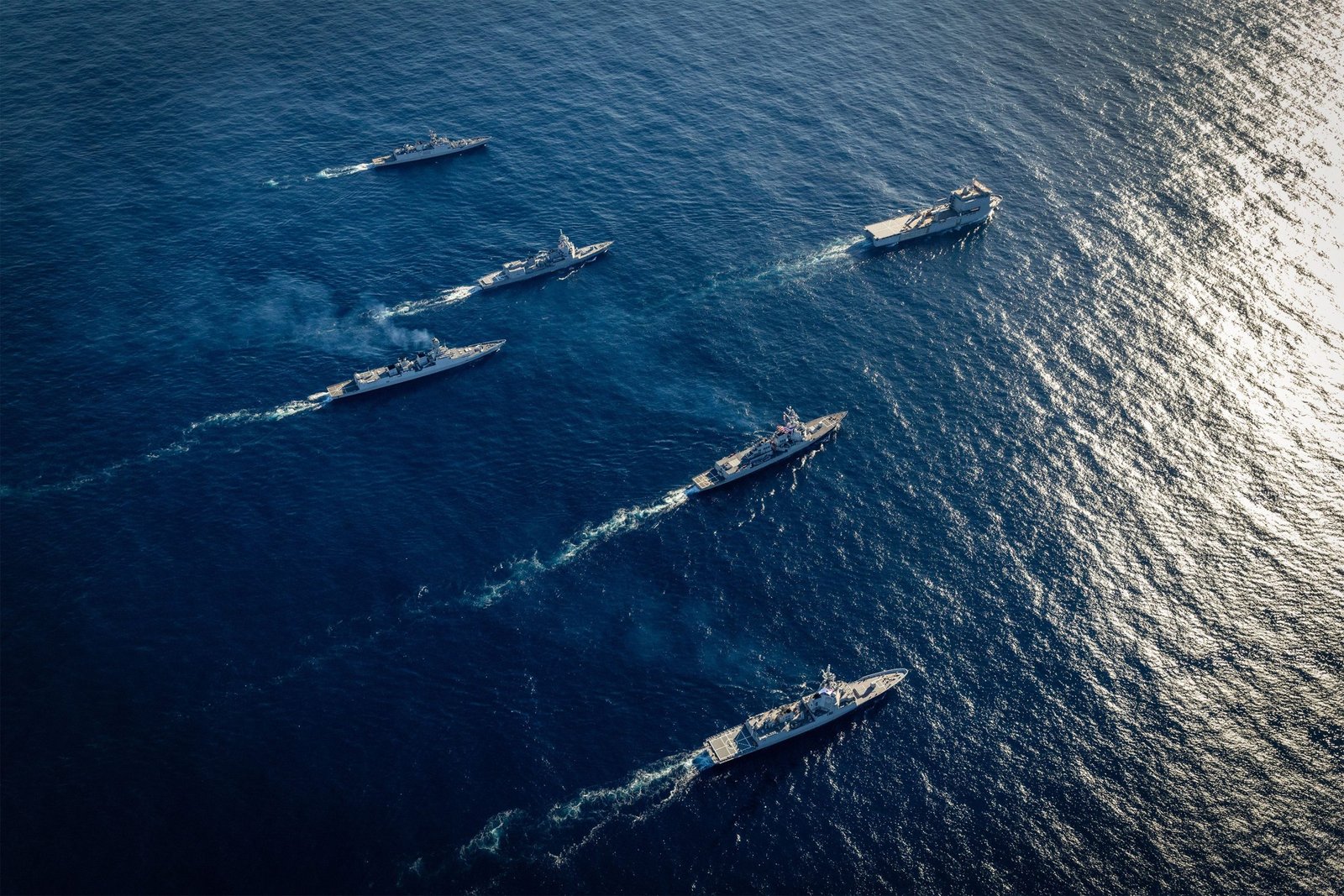
As China expands its strategic reach in the Indo-Pacific with an increase in the range and scope of its submarines, Australia and India will work together on a collaborative research project aimed at enhancing undersea surveillance capabilities, marking the first science and technology pact between the two nations.
The three-year initiative focuses on improving submarine detection and autonomous underwater vehicle tracking through advanced technologies, which are predominantly aimed at monitoring Chinese activities in the Indo-Pacific. The project involves the Defence Science and Technology Group’s (DSTG) Information Sciences Division and India’s Defence Research and Development Organisation’s Naval Physical and Oceanographic Laboratory.
The collaboration aims to test novel algorithms and share expertise between the two nations on undersea surveillance systems, one of the focus technologies of AUKUS Pillar II. The joint research, announced last month, will explore the use of towed array target motion analysis to enhance current surveillance systems’ reliability and efficiency, which could be extended for anti-submarine operations.
A towed array-based signal processing system consists of hydrophones towed behind a vessel to detect underwater acoustic signals. It analyses sound signals to identify and track maritime targets. This collaboration will be connected with the installation of acoustic systems, and a joint project to lay an undersea optical fibre communications cable from Chennai to Port Blair could also materialise. Once completed, the network is likely to be integrated with the existing US–Japan “Fish Hook” network, created specifically to monitor the Chinese navy’s submarine activity in the South China Sea and the Indian Ocean Rim.
Furthermore, the joint project with the University of Western Australia Defence and Security Institute (UWA DSI) aims to strengthen bilateral cooperation between Australia and India in maritime domain awareness (MDA) capabilities in the Indo-Pacific region, specifically focusing on Underwater Domain Awareness (UDA).
The initiative will address five key aspects of UDA: an initial scoping study of Australia–India bilateral undersea intentions and capabilities; anti-submarine warfare (ASW); uncrewed underwater vehicles (UUVs); undersea search and rescue; and deep-sea awareness. The project aims to contribute significantly to regional stability and security while aligning with recent diplomatic developments and broader initiatives like the Indo-Pacific Oceans Initiative (IPOI) by fostering policy collaboration across academic, industry, and government spheres.
The India–Australia Joint Declaration on a Shared Vision for Maritime Cooperation in the Indo-Pacific, referred to in the Comprehensive Strategic Partnership (CSP), prioritises strengthening regional maritime domain awareness, especially in the Indian Ocean. This project addresses critical areas of maritime security that have become increasingly important due to the growing presence of underwater threats in the Eastern Indian and Pacific Oceans, thereby increasing strategic co-operation between India’s Eastern Fleet and Australia’s Western Fleet. Its relevance is further underscored by its alignment with recent diplomatic developments, notably the joint statement issued after the second India–Australia 2+2 Ministerial Dialogue in New Delhi in November 2023, highlighting increased discussion of bilateral cooperation in UDA.
For the project, five long-form joint research publications will be produced, each covering one of the UDA themes identified above. They will be authored by subject-matter experts at the University of Western Australia Defence and Security Institute (UWA DSI) and the Council for Strategic and Defence Research (CSDR). A final white paper will synthesise the findings of these five thematically focused long-form papers and offer detailed policy recommendations.
As part of co-operation in the underwater domain, and to ensure the best-informed research, four workshops will be held involving government and non-government stakeholders—two each in India and Australia—with seven participants from each country. There will also be a three-week exchange opportunity for an Australian researcher in India and an Indian researcher in Australia. The project is funded by the Department of Foreign Affairs and Trade (DFAT), Government of Australia, and the Indian Ministry of Defence.
The joint research initiative between Australia’s DSTG and India’s DRDO will focus on improving early detection and tracking of underwater threats, including submarines and autonomous underwater vehicles (AUVs). The project will leverage advanced signal processing and machine learning algorithms through Towed Array Target Motion Analysis (TMA) systems.
The three-year research program will explore how towed array hydrophones—deployed behind submarines or surface ships—can enhance acoustic monitoring. This innovation emerges amid a broader strategic effort within the QUAD—comprising India, Australia, Japan, and the United States—to deepen cooperation on maritime and transnational security, including the development of critical technologies.
At the July 1 summit in Washington, the QUAD foreign ministers launched a new agenda aimed at bolstering regional peace and economic resilience, with the goal of providing necessary deterrence for anti-submarine operations. As four leading maritime nations in the Indo-Pacific, they reaffirmed their conviction that peace and stability in the maritime domain underpin the region’s security and prosperity.
The ministers also reaffirmed their opposition to unilateral actions that alter the regional status quo, particularly in the South China Sea, and emphasised the importance of adherence to international maritime law, including UNCLOS.
For India, this focus on underwater surveillance aligns with its growing deployment of indigenous underwater drones. The Indian Navy’s fleet of Autonomous Underwater Vehicles—many equipped with the GENISYS Self-Learning Command & Control module developed by SDEPL—plays a critical role in enhancing UDA. Integrated with advanced sonar, imaging systems, and encrypted communication links, these platforms allow the Navy to track adversarial movements, protect shipping lanes, and monitor sensitive Exclusive Economic Zones (EEZs).
As the QUAD sharpens its focus on high-tech cooperation and maritime deterrence, initiatives like the India–Australia undersea project are likely to become key pillars in safeguarding shared regional interests. As strategic waters become increasingly contested and adversaries rely on stealth technologies, real-time undersea intelligence may prove indispensable.
In conclusion, the undersea co-operation between India and Australia is expected to provide the necessary impetus for anti-submarine operations in the wider Indo-Pacific region and serve as a strategic deterrence mechanism in line with Australia’s expectations under the AUKUS agreement.
Leave a Reply